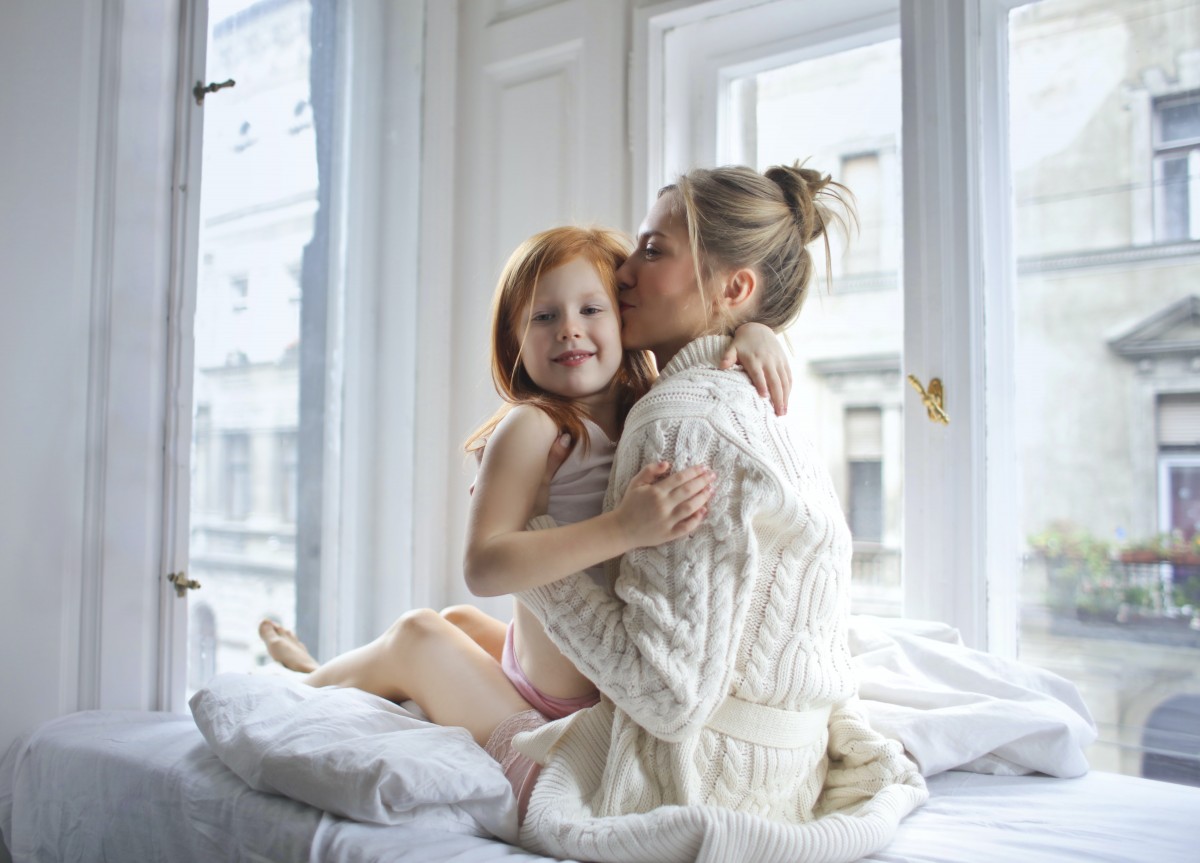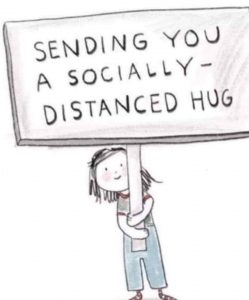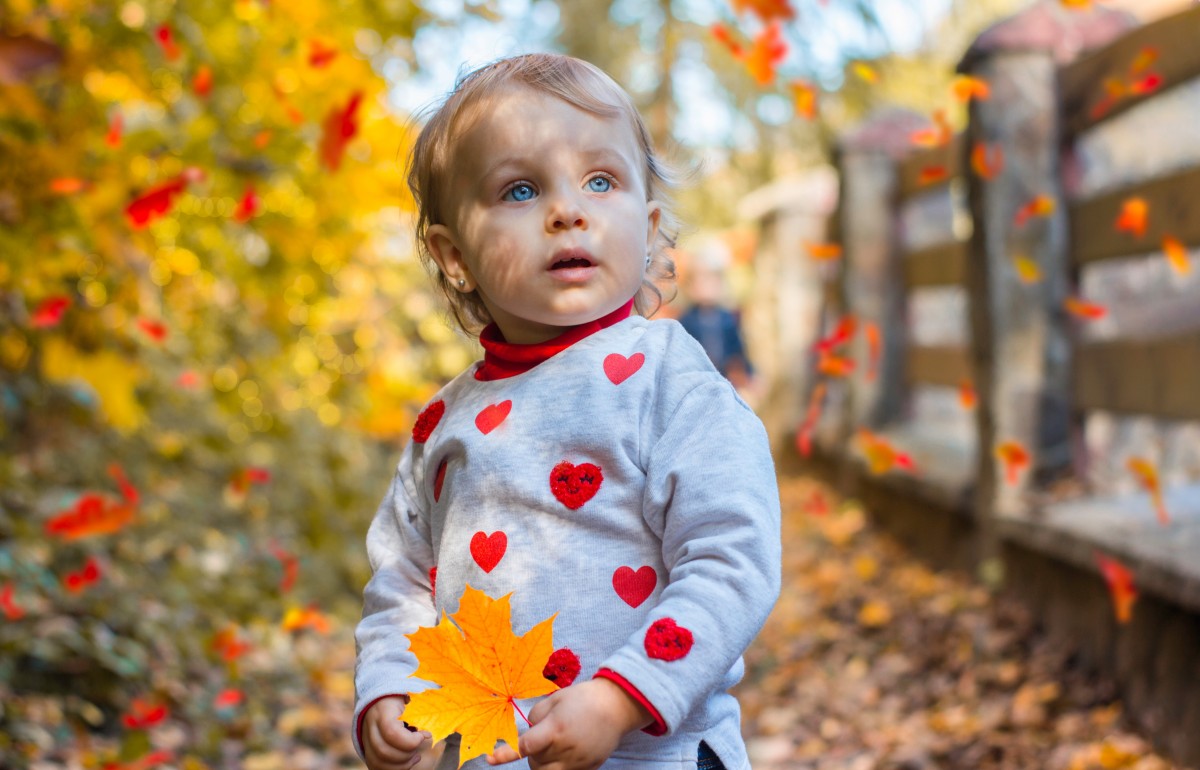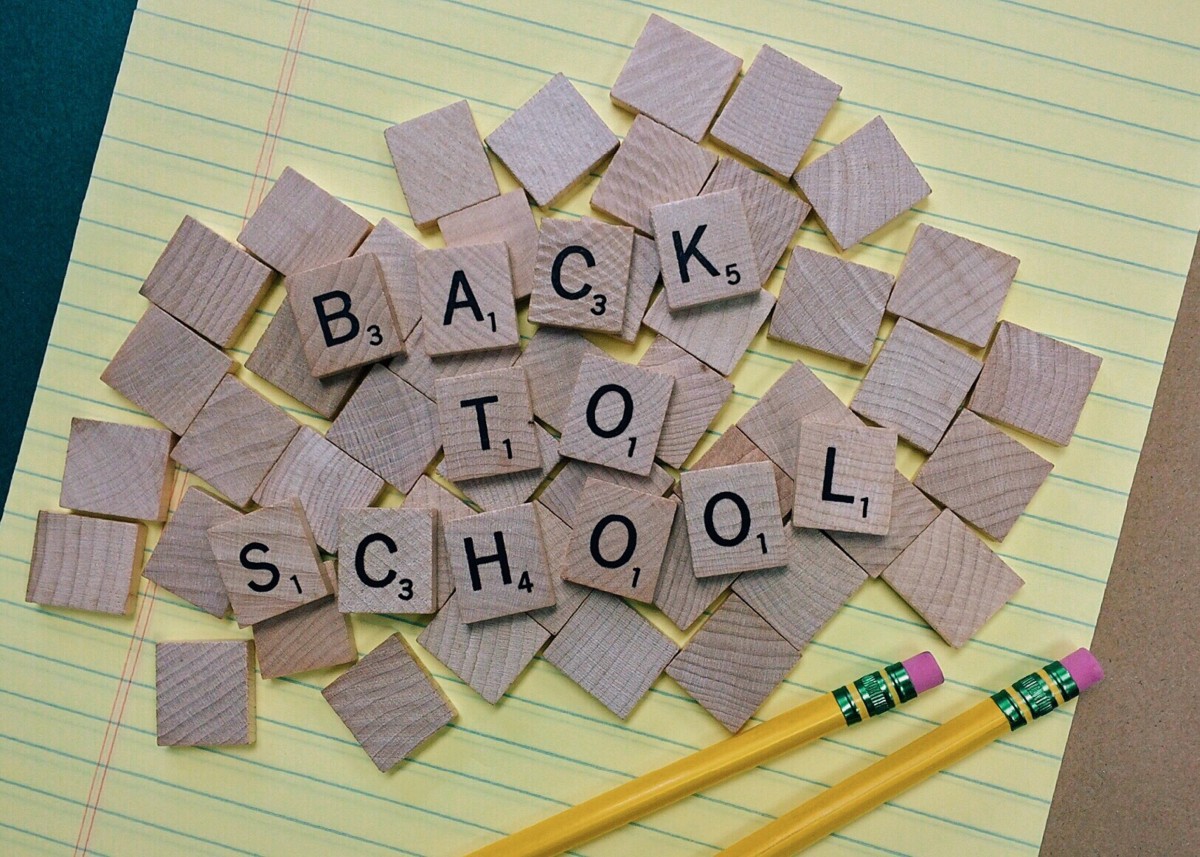
by Kathryn de Bruin | Apr 7, 2020 | Anxiety, Couples in Therapy, Emotions, Family Therapy
We all experience stress, and naturally want to be able to provide comfort to our loved ones.
This is our responsibility, and what helps us to feel like effective parents and partners. The bigger question is whether you know when your loved ones are distressed or not.
People show stress in different ways and sometimes it’s not always easy to tell. For instance, children who are depressed often don’t look sad, instead they get mad. Active children can get overstimulated and get even more active when they are feeling out of control. Some people get very quiet, some get very loud, some get obnoxious and some get funny. We all experience it and show it in different ways.
Here are some family conversation starters to learn this information, so that we can better read cues and know when to step in and to support one another:
- So we all feel calm at times, and we all get stressed out at times. How do you know when you are calm and when you are stressed?
- Where do you experience stress? Some people feel it in their bodies, some experience it in their minds, and some in their feelings. How about in your body? (i.e. heart racing, hands and feet sweaty, muscles activated, shallow breathing). Do you experience stress in your thoughts? (i.e. same thoughts over and over again, can’t stop thinking, worrying all the time, overly focused on one thing). Do you experience stress in your feelings? (i.e. sad, tearful, anxious, angry).
- What causes you stress? We all have different things that trigger us. Do you feel stress when you’re in trouble? When there is tension in the house? When you are bored? When you are called a certain word? When you feel blamed for something?
- How well do we know the members of our family. Who of us gets angry when we are stressed? Who gets super quiet? Who worries the most in our family? Who gets focused and busy? Who can’t stop talking and gets overexcited? Which of us feels it the most in their body? Who gets funny?
- When there’s stress in our family, what happens to our relationships?
- When “family member A” is stressed, what happens to us? Who notices? Who tries to help? Who gets upset too? Who is affected by it? Who turns away and gets scarce?
We discovered that our middle daughter feels tension. Any time there’s tension in our house, in whatever relationship is present, she feels it. She’s an empath, she dislikes the feeling of tension and would prefer it if everyone was just happy and calm all the time. Once we discovered this, we developed a strategy where she can come and stand close to my husband or I, anytime she feels the pressure. If she squeezes our hand, then it’s her way of saying, “I’m too stressed out and I need help calming down.” This way we know she is experiencing emotional dysregulation and can help her feel supported and calmer and not alone in these times of distress. This can help your child identify those times and feelings, and also help you as a parent better address the situation.
Knowing how our family handles stress can empower us – and cause us to change our interactions. Whether it is reframing a conversation to help prevent stress, or calming your loved one down after they have already experienced stress, knowing what causes them stress and the best way to address it will not only help your family in this crisis, but also with any difficulty to come.

by Kathryn de Bruin | Mar 31, 2020 | Anxiety, Family Therapy, Therapy
I’m thinking about you all as we are going through this environmental crisis that is hitting close to home for all of us.
Some families and couples that I’ve checked in on are rallying together against this common enemy and are feeling stronger in their relational dynamics than usual. This is wonderful news! Other families/couples are struggling more than usual because this crisis is surfacing any crack in their relational foundation and it’s hard for them to get through the day without their negative cycle getting triggered. My heart especially goes out to these families who are feeling that heaviness, and I’ve wanted to put together a series of blogs that gives some coping tools to get through this crisis together as a family.
Blogs 1-3 start with three very different but common strategies many of us utilize for coping: Secure, Anxious and Withdrawn. Obviously we can fluctuate between them at different points, but we often land on one or two that are most comfortable for us in times of uncertainty.
In blog 4 we dive into recognizing our own personal and unique family strategies – this will help give an idea of how your family would like to receive love based on their coping strategy, and what comforts them best during this time of stress (and how you best receive it!)
For our final blogs we get to talking about the virus specifically. I’ll go through questions we should be asking as a family and ways to prepare, ways to utilize play therapy techniques with your child to check in on how they are doing, and finally talking about how the elements of “challenge” and “trauma” play into this difficult time.
My hope in this blog series is yes, to help everyone learn coping techniques, but to also bring light and recognition, perhaps a few “aha!” moments, and awareness of how to better get through this individually and together!


by Kathryn de Bruin | Oct 31, 2019 | Anxiety
I hate to say it, but we live in a culture of bullying and teasing…
I remember when I first arrived in the States twenty years ago and watched shows like Saturday Night Live, and really struggling with the satire. I just couldn’t understand how a group could make fun of others. Having lived in two other countries and traveled to countless places, I can’t say that I’ve experienced this the way that I have here. In America, we seem to take things to an extreme and we seem to make fun of everything. I wonder to myself when all of this came about, when did it become ok to be mean and to rip people off. When did this become the definition of closeness and of friendship. Is this a result of playfulness due to closeness? Or is this an avoidance of intimacy? I suppose it could be both or either, but deciphering that as a child, must be challenging. Teasing and endearment have become entangled and have added to anxiety in school. Isn’t that what we often tell our children, he wouldn’t tease you if he didn’t like you?
When you’ve been raised in a culture that is very different, with messages like “If you can’t say something nice then don’t say anything at all”, and “Be ladylike” and “Sarcasm doesn’t become you”, then you inevitably face a clash when entering this culture. It’s made for an interesting adjustment for me. Now that I’ve adjusted and can enjoy and take part in the teasing, I don’t fit in quite as well when I do travel back to South Africa. There I get flack for being so sarcastic.
We’ve faced so many school shootings, and I work with so many young children who are being bullied in elementary and middle school and who come to my office depressed and often suicidal. This means I’ve given a lot of thought to these problems, and they stand out to me as seemingly particular to this country, even more so than to others I’ve spent time in. And I wonder if these issues are related to the larger culture, and not just to a particular school and problem with bullying alone. Are we contributing to this problem as a larger culture? It’s a hard question to ask, because of course the “buck stops” with the person who actually took the action of committing a crime. But, it’s also important to look at the larger context, and ask what context this child was raised in, including the school climate, their family climate and their larger community and country. School bullying and middle-school nastiness has become a trend, a norm. And for that reason, it’s something that we need to educate our children about, and prepare our children to deal with. It’s certainly on my mind, and my children haven’t even entered middle-school yet. It’s certainly not something that I grew up with, and so knowing how to navigate these challenges, from personal experience, doesn’t come naturally for me.
So what are the ways we can better combat this for ourselves and our families?
Educate Yourself
I recently watched 13 Reasons Why and as horrifying as the series is, I would recommend this show to any parent. My experience growing up and in school was very different to what my children are experiencing today, and I need to know they are facing so that I can be ready to help equip them for the possible challenges in their social environment. Getting a feel for the pressure children feel and a sense of how the peer system is set up has been helpful to me.
Role Play
One of my favorite ways to engage children in learning emotional and social skills within the family context, is using role play. Ask your children what the meanest thing is that they have seen or heard at school, and then act it out. They love it when you switch up roles, and you’re the mean kid first, or the one being picked on. So switch it up and get them engaged. Teach them the difference between a passive response (being the doormat), the aggressive response (punching the other kid) and the assertive response (standing up for yourself, in a firm and clear way). Try each of the responses and ask them to reflect on what it’s like on the other side of these. Have them try the assertive response until it’s believable. Does their voice line up with their eye contact, facial expression and vocal tone. Would you take them seriously?
Utilize Sibling Rivalry
Luckily when you have multiple kids and they are close to each other in age, sibling rivalry is par for the course. And so there is ample opportunity to watch how your children handle their siblings meanness. I love thinking about the primary family as a microcosm of the rest of their lives.
How they learn to handle these relationships at home, will mirror how they handle their friendships, and then their colleagues at work, and ultimately their romantic partners in life.
The opportunity lies in these sibling relationships to teach respect, assertiveness and compromise. I think one of the most used phrases in our household is – ‘Find Agreement’. The three kids are sitting own to watch a show, and if they can’t ‘find agreement’, well
then there’s no show to be watched at all.
The social context our children are growing up in is entirely different, and it can be tough to relate and help. Understanding it ourselves is the first step in helping our children cope with it. Helping them to be resilient, and to be assertive are the most important tools as they face any teasing that they are bound to experience growing up.

by Kathryn de Bruin | Oct 28, 2019 | Anxiety, Emotions, Family Therapy
As you parent, you come to notice a pattern in your child’s anxious stages (it may even present as clinginess) through their development. It’s helpful to understand why they are going through this. As a resource, I’ve created this guide of natural behaviors to provide a sense of comfort and what to expect through these various phases.
9 months – 12 months
Your infant’s memory is developing and you might start to see your child have “stranger anxiety”. This happens in infants across all cultures. Infants are frightened, withdraw or show distress when they are with unfamiliar people. They now have the ability to compare the faces they see with familiar faces that are in memory, which means they know that they don’t know someone. This can lead to separation anxiety, as they can remember previous separations, and recognize signs of leaving. They also remember feelings of distress. And so they protest the separation, trying to get to parent to stay.
Infants will gradually learn to regulate this. They will also learn that their parent comes back too. As soon as object permanence develops, children can remember their parents internally and feel comfort when they miss them.
18 – 24 months
Separation and fear for the toddler, is necessary for survival, as they practice going off and coming back.
They learn that separations are survivable, reunions can be trusted, and this forms the foundation for confidence in the world.
Toddlers may be more anxious about mom’s attachment, and can be very reactive at this age, because they are developing and realizing that “My parent and I don’t think the same thoughts” and “I can’t control my parent, she has separate thoughts”. Separation and individuation is both exhilarating and frightening. The toddler experiences ambivalence, I want to push mom away, but also want to cling to her. I want to be autonomous and also maintain attachment.
Hopefully this tool helps you as you navigate those first few years and the anxiety including separation anxiety that often come with it. Knowing what your child is probably experiencing will help you know the best ways to address their concerns and needs for their age.

by Kathryn de Bruin | Aug 31, 2019 | Anxiety, Family Therapy
Getting Used to the “New Flow” of the New School Year
As parents we are both relieved that the long summer is over, but are also holding our breath these first few weeks as our children start the new school year. “How will they do with the mounting pressure?” we ask ourselves and watch carefully with bated breath. We’re all in the same boat, hoping for the best, that our precious kids will make new friends, like their teachers, and keep up with their school work. Beyond that, will they manage the new busy schedule, and be able to get into a routine where they are motivated to work hard.
Markers For How They’re Doing
We’re watching for signs that our children will adjust to the new school year in a healthy way. We understand that the first week might be challenging, even for those children who have been looking forward to school and generally cope well. We still expect to see more tears, irritable attitudes, fatigue and complaints during those first few days, as the schedule has changed significantly from summer time. “Mom, do we have to go to school again today?” or “Mom is it going to be such a long school day again?” shouldn’t surprise us. Maybe a child who ran into her classroom on the first day, and then literally freezes in front of the class room door on only day two. Or the boy who develops a slight tick, wrinkling up his eyes in a frown when he doesn’t know what he’s doing, or starting to pick at his lips.
Patience with the Growing Pains
Anytime we stretch and grow there are growing pains, much of which we are seeing in these first few weeks. Behavior that is new and doesn’t seem to make sense warrant a lot more attention, structure at home, hugs and cuddles. Patience and understanding from us will go a long way.
-Expect some different behavior
-Be patient and offer extra support
-Make things as predictable as possible
-Be available to listen and to spend one on one time
Watching for Symptoms
We try to expect these changes, take a deep breath and not attribute too much meaning or anxiety to what we’re seeing. “It’s only the first week” we tell ourselves. It’s when the behavior becomes a pattern that doesn’t change, that we start to feel alarmed.
-Mood: Irritability or Moodiness
-Withdrawing: Lack of Interest in Activities that usually bring joy
-Anger: Frequent Melt Downs with No Apparent Cause
-Physical symptoms: Trips to the Nurses Office, Aches and Pains
-Anxiety: Struggling to Sleep at Night and Being Afraid of Going to Activities
-Bullying Siblings: Increased Sibling Rivalry
You’ve been patient and the changes in your child are now starting to cause stress in the family. It’s harder to understand where the behavior is coming from, the melt downs are harder to endure. You’re starting to worry and it’s important to trust your instincts.
We suggest calling in a family therapist to get input. Bring your child in for an assessment, and get some additional ways to support your child to make the necessary transitions they need to.
Give yourself and your family the ability to breathe again.

by Kathryn de Bruin | Jul 30, 2019 | Anxiety, Emotions, Family Therapy
At the moment your anxiety owns you. But let’s turn the tables and have you own your anxiety! Admit that it’s there, and then start to see how it shows up in your life. The best way to do this, is to track it. Start a daily log, and commit to doing this for a month. I did this about 15 years ago, I tracked my anxiety for 3 months, on a daily basis, and I learned so much about myself. You can create any kind of tracking system, in fact there are very good app’s these days that do it for you.
I believe it’s important to include your sleep cycle. If you are not sleeping well, you simply can’t cope in life, and lack of sleep is bound to affect your mood. People need different amounts of sleep, do you know how many hours your child needs for optimal mental health? Start seeing what their behavior and mood is like after they get different amounts of sleep. Perhaps they still need a nap, or at least some down time during the
day?
Monitoring hydration is essential, children often get nightmares because they are dehydrated, and this can become a cause of anxiety, that is easily remedied with water. Teach your children how much water they should be drinking daily, and create a tracking system so that they can count how many glasses of water they are taking in daily.
Teach them that there are basic building blocks to mental health, and that good sleep, hydration, nutrition, exercise, fresh air and social contact are all big blocks. If they can work these basics into their routine, then they are doing a lot to combat anxiety.
Anxiety can be the result of organic causes or even a symptom of certain food types. Sugar and caffeine are natural antecedents of anxiety, but beyond this, monitor your child’s nutrition to see if there is anything else that is producing behavioral changes. Making sure that children get Fishoil, Vit D and Vit B are also basic ways to ensure their overall health.
The fact is, that feelings don’t come out of nowhere. They show up for a reason, because something has happened, or our body is trying to let us know something.
Starting a daily habit of journaling, will increase their ability to tune in to what is happening in the present moment. Then they will become more aware of what triggers them. And once they know what makes them feel bad, they can start to confront the lies and make different meaning out of information.
Here’s a helpful template to give you guidance as you take those next steps to journal.
Be sure to include the:
DATE:
SLEEP: Good, Fair, Poor
TOTAL HOURS: 6-7-8-9-10
ENERGY: Good, Fair, Poor
CONCENTRATION: Good, Fair, Poor
EATING: Good, Fair, Poor
LIQUIDS: Good, Fair, Poor
FEELINGS: Mad, Sad, Scared, Glad
RATE THEM: 1-2-3-4-5-6-7-8-9-10
1. What am I feeling?
2. What is my feeling temperature? (How do I feel from 1 – 10, 10 being anxious, 1 being
calm)
3. What am I thinking?
4. What’s the proof that it will happen?
5. What’s the proof that it won’t happen?
6. So what if it happens?
7. How can I deal with it?
8. What can I say and do to help me get through this?
9. What’s my feeling temperature now?
I hope this helps aid you in your journey to healing. Anxiety can be crippling and any steps you take to discover more about triggers and patterns can be beneficial. Also please consider Contacting Us to set up an appointment to discuss your journey and ways to move forward!
Photo by Jessica Lewis from Pexels







